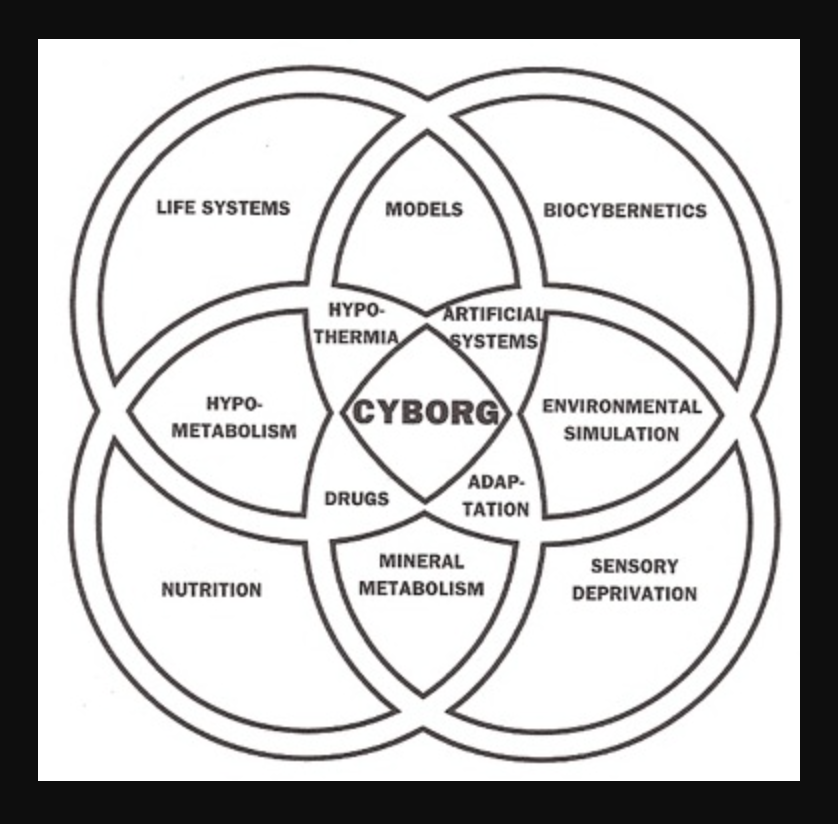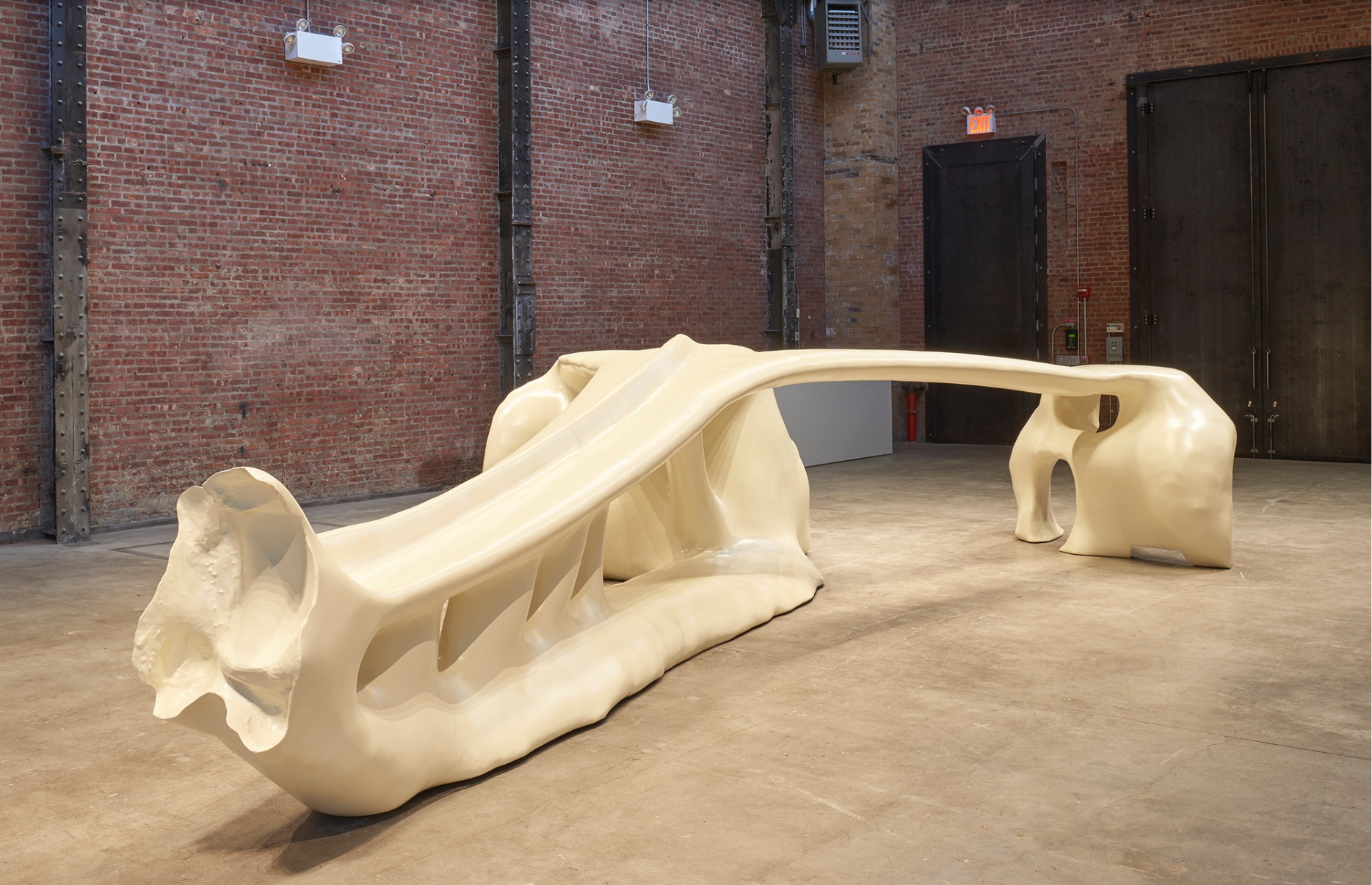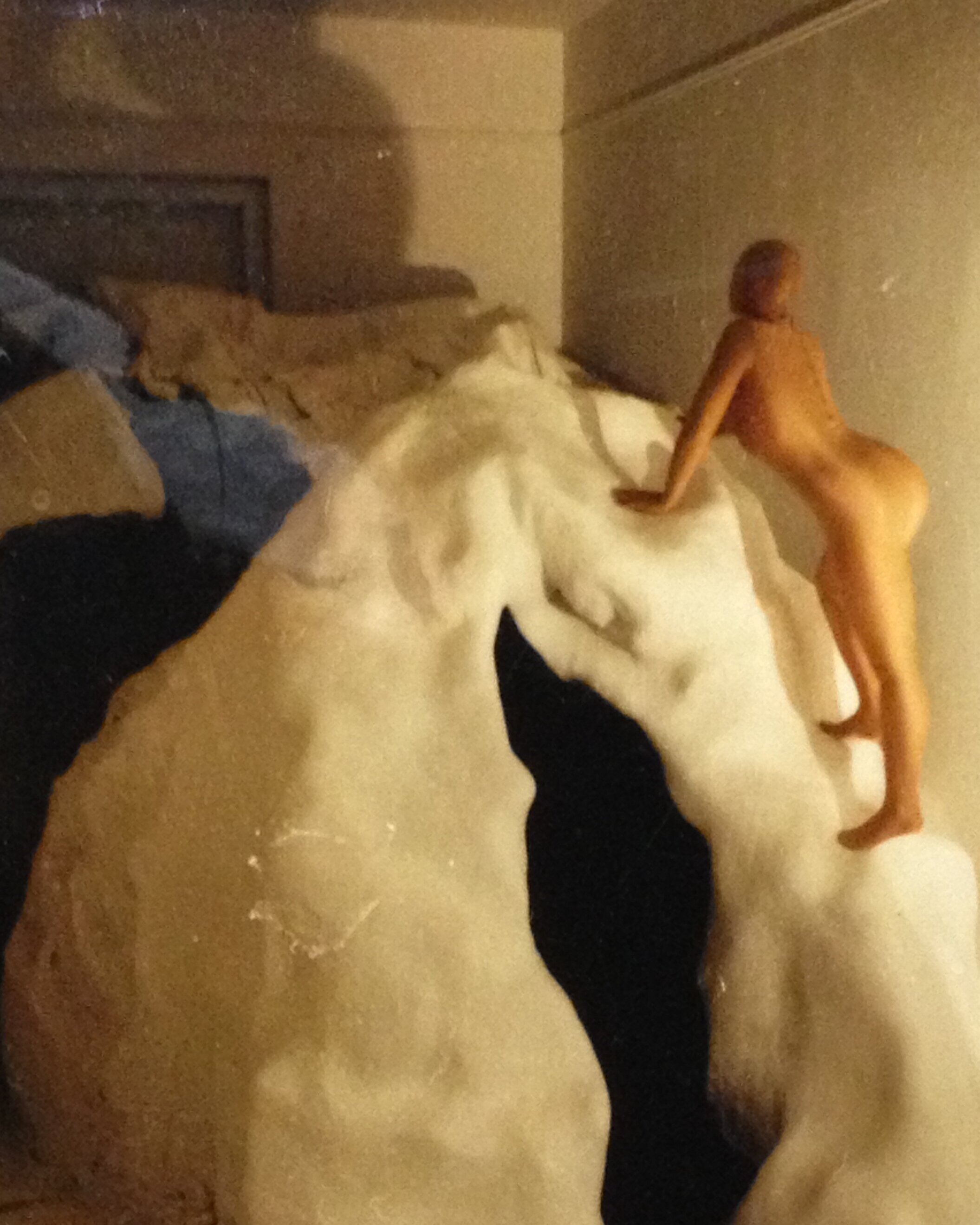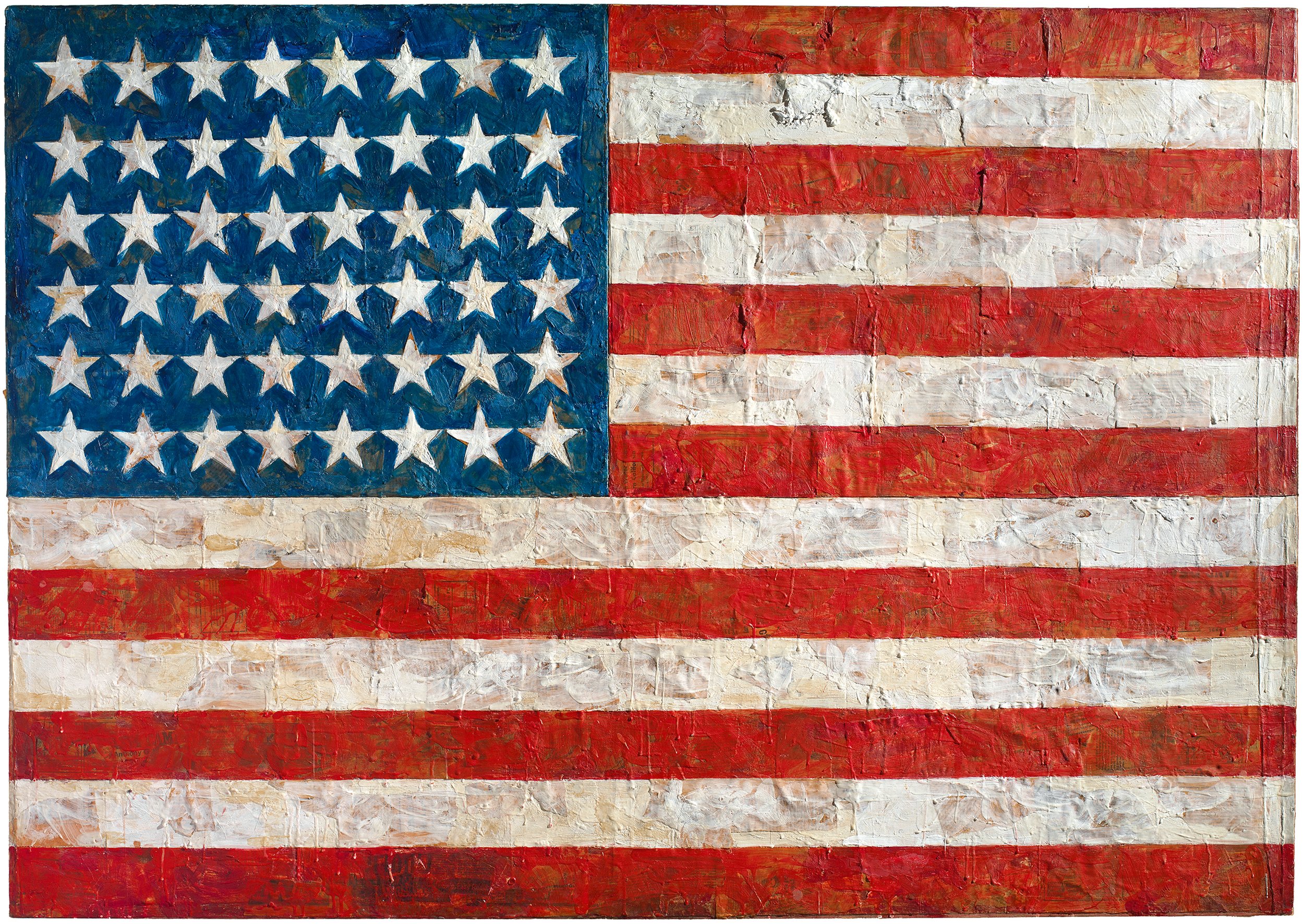ON WAVES
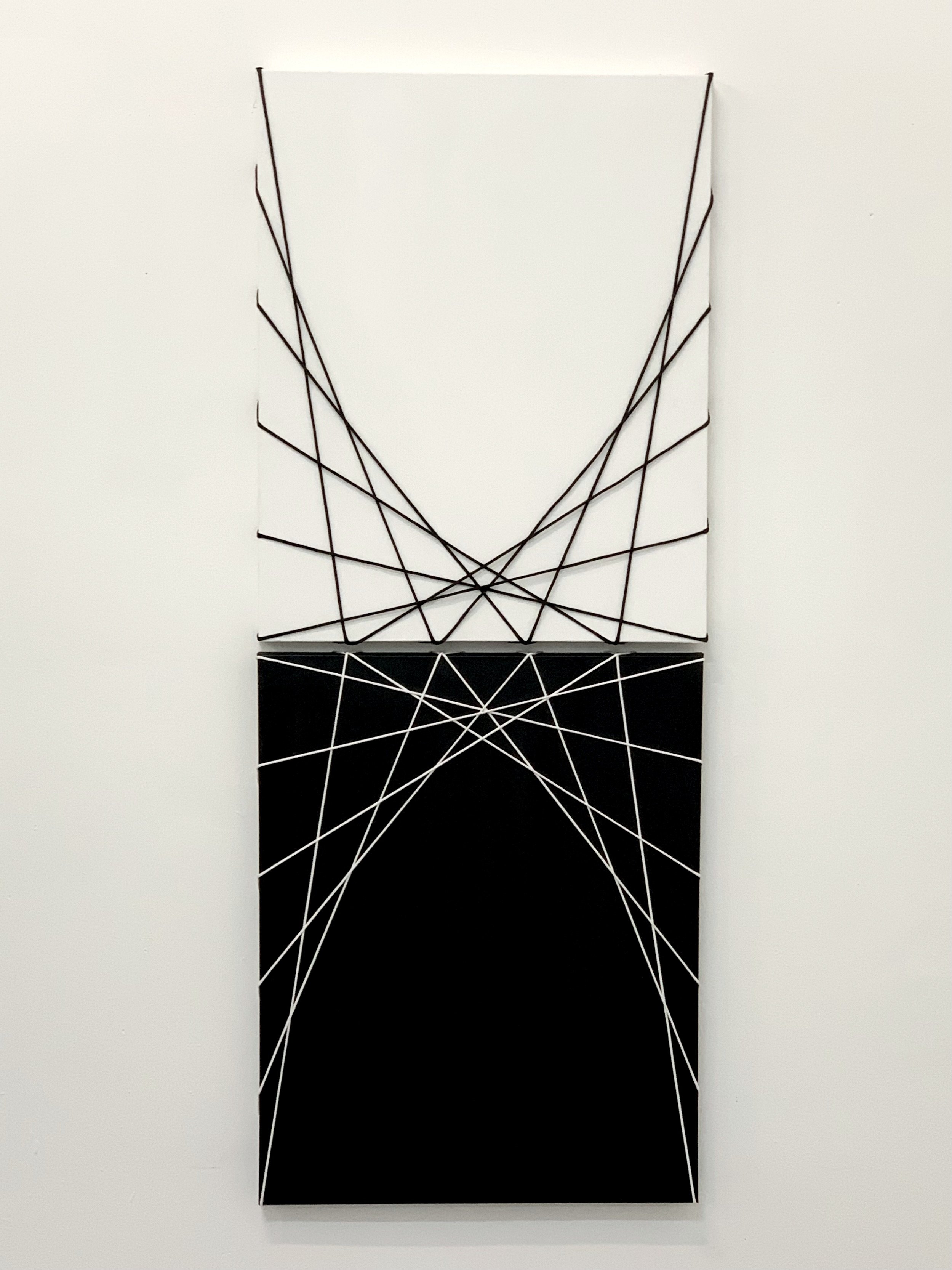
By Anna Ehrsam
On Waves
Kleindienst Gallery
curated by BOWERYSHED
Enminded Bodies and Embodied Minds in the Metaverse;
( Exploring An Interactive 3D VR Exhibition, Consciousness and the nature of Reality)
“If there's any object in human experience that's a precedent for what a computer should be like, it's a musical instrument: a device where you can explore a huge range of possibilities through an interface that connects your mind and your body, allowing you to be emotionally authentic and expressive.” Jaron Lanier
Is technology like VR, AR, the Cell Phone and the Computer an extension of our consciousness?
On Waves is a 3D interactive Virtual Reality exhibition hosted by Gallerie Kleindienst based in Leipzig, Germany. This exhibition is an embodied ethereum occupying an interesting infinite, omnipresent space for the exploration of art and reality.
This beautiful exhibition, presents works in a higher dimensional utopian environment which liberates the work and the viewer from the confines of Newtonian space and time. It is truly “art in the expanded field” . The unifying theme of the exhibition is physics as it relates to the electromagnetic spectrum and waves, which include light, spacetime, technology and our relationship to it.
Most of the work in this VR show exists as objects and images in what I will call In Real LIfe or IRL, which is one of the physical realities we exist in. You can imagine that the work in this exhibition exists in multiple realities as well as in your consciousness.
On Waves presents physical and digital artwork installed virtually in a 3D digital-twin of an actual space. The works in this show represent a range of media: painting, digital art, video, photo, physical sculpture, poetry, NFT's etc. And also demonstrate how this unique VR space, simulating a traditional white cube gallery, enables the viewer to navigate it as one would a traditional space.
Kleindienst Gallery is one of the top galleries in Leipzig, Germany. They are also one of the pioneers incorporating VR exhibitions with their already existing programs. Presenting VR exhibitions alongside existing galleries’ IRL programing, can be a great way to expand art discourse in a time where market momentum seems to overshadow scholarly weight or conceptual importance.
Part 1.
Here you can experience this omnipresent exhibition, formulate an understanding of the artworks, and try out the 3D interactive features which allow you to fully explore the work in a heightened scopophilic way. You can exist within this VR space, move freely, immersed in your experience, engaging with each work, with options for audio didactics and hypertext. You can choose your own path and journey through On Waves immersed in this luminous Virtual Reality exhibition made of light.
On Waves creates an immersive interactive exploratory experience in real time, which you can explore while tethered to your favorite relaxing place in your universe, your armchair, or as I prefer, the chaise lounge. Relax, sit back or stand, and enjoy your journey through On Waves.
This exhibition presents ideas from the fields of, physics, astrophysics, poetry, optics, photonics, photography, sculpture, painting and technology, as it focuses on subjects ranging from the study of light waves, the spacetime continuum, the origin of the multiverse, the Big Bang and the sea. Here the unifying theory of everything is waves as they exist in the electromagnetic spectrum, as energy and wave forms.
As a technologist, inventor, artist and writer, engaged in an exploration of physics, technology, hyperdimensional space, poetry, art and culture, I was inspired to write about this exhibition and the VR technology used to support the dissemination and embodiment of these complex multivalent works of art. I believe VR’s omnipresence, facility to describe art and open up access, interaction and explorations, makes this way of exhibiting, documenting and being with art feel like an extension of our neurophysiology.
Here I present some of my findings and thoughts on the nature of Reality, VR, AR, the Metaverse, and Art. This is my effort to advance the collective understanding and awareness of these concepts and phenomena.
I propose that we exist within a number of relational systems, starting within our multiverse, embedded in our planetary ecosystem of the natural world, it's important that we remain grounded in the natural world, in the environment and our collective reality. We are social beings, we need each other and we need to eat, sleep and make love in real life (IRL). Only from this perspective as earthlings, can we be responsible inhabitants of the metaverse and good stewards of the earth and our fellow sentient beings.
So what is virtual reality or VR and further what is the metaverse? These questions have inspired me to do a deep dive in an effort to contextualize this exhibition as well as understand the broader context as it relates to the metaverse.
“If people were able to be convinced that art is precisely advanced knowledge of how to cope with the psychic and social consequences of the next technology, would they all become artists? “ Marshall McLuhan
We can consider that VR and IRL exist on a sliding scale of real to virtual environments. What is Reality and Virtual Reality? I propose they are extensions of our consciousness.
Artists
Liz Alderman
Kevin Dudley
Anna Ehrsam
Eric Feuer
Katherine Jackson
Patrick Meagher
Iliana Ortega
Dalila Pasotti
Pestypig
Click link to view 3D interactive VR ON WAVES
Part 2. Etymology of Virtual Reality
"Virtual" has had the meaning of "being something in essence or effect, though not actually or in fact" since the mid-1400s.The term "virtual" has been used in the computer sense of "not physically existing but made to appear by software" since 1959.
In 1938, French avant-garde playwright Antonin Artaud described the illusory nature of characters and objects in the theater as "la réalité virtuelle" in a collection of essays, Le Théâtre et son double. The English translation of this book, published in 1958 as The Theater and its Double, is the earliest published use of the term "virtual reality". The term "artificial reality", coined by Myron Krueger, has been in use since the 1970s. The term "virtual reality" was first used in a science fiction context in The Judas Mandala, a 1982 novel by Damien Broderick.
Widespread adoption of the term "virtual reality" in the popular media is attributed to Jaron Lanier, who in the late 1980s designed some of the first business-grade virtual reality hardware under his firm VPL Research, and in the 1992 film Lawnmower Man, which features use of virtual reality systems.
Virtual reality (VR) is a computer-simulated environment that can simulate physical presence in places in the real world, as well as in imaginary worlds.
What is Reality”?
Perhaps we can think in terms of VR as being part of a virtuality continuum which is a continuous scale, ranging between the completely virtual, a virtuality, and the completely real: reality. The reality–virtuality continuum therefore encompasses all possible variations and compositions of real and virtual objects. It has been described as a concept in new media and computer science, but in fact it could be considered a matter of anthropology. The concept was first introduced by Paul Milgram.The area between the two extremes, where both the real and the virtual are mixed, is the so-called mixed reality. This in turn is said to consist of both augmented reality, where the virtual augments the real, and augmented virtuality, where the real augments the virtual. Cyberspace, the world's computer systems considered as an interconnected whole, can be thought of as a virtual reality; for instance, it is portrayed as such in the cyberpunk fiction of William Gibson and others. Second Life and MMORPGs, such as World of Warcraft, are examples of artificial environments or virtual worlds (falling some way short of full virtual reality) in cyberspace.
“Katherine Jackson This Fabulous Shadow Only the Sea Keeps”Photograph on aluminum
43.65” x 39.37” 2019 Limited Edition 1/3
The title is the final line of Hart Crane’s elegy, At Melville’s Tomb. A whale, or some whale-like force, appears earlier in the poem, and in the final lines, the “fabulous shadow.. the sea keeps”, could refer to one of the mariners who drowned in Moby Dick, or Melville himself, or the whale as it moves through. The lens shape has the quality of a porthole, or a stilled gaze into the depths, where light and shadow play along the edges, and flow on.
Patrick Meagher Hello Wifi, 2015, Inkjet on Paper
13 x 19 Inches
Hello Wifi is a print from PatricK Meagher's 2016 solo show at Equity Gallery, NYC, which presents digital collage inkjet prints, paintings, and porcelain, wood and steel sculptures that explore how the digital age affects us spiritually and emotionally. These works use familiar images and icons of the early Web to examine notions of personal awareness and our relationship to broader human consciousness in a mass media-driven universe.
Dalila Pasotti, “GW”, 2020.
Marble, Stainless Steel, Steel, 11 X 14 Inches
Part 3.
Many-Worlds Interpretation (MWI ) of Reality
From the field of quantum physics we can consider the Many-Worlds Interpretation or (MWI ), which implies that there are most likely an uncountably infinite number of universes and realities . This is one of many multiverse hypotheses in physics and philosophy. MWI views time as a many-branched tree, wherein every possible quantum outcome is realized. This is intended to resolve some paradoxes of quantum theory, such as the EPR paradox and Schrödinger's cat, since every possible outcome of a quantum event exists in its own universe. I'm pleased there is a cat involved in this story.
VR is not a substitute for IRL, or for having a body and occupying the natural world and space in a first hand way, though it does extend one's possibilities for experiences .
Technology
Broadly speaking, the technologies that make up the metaverse can include virtual reality—characterized by persistent virtual worlds that continue to exist even when you're not playing—as well as augmented reality that combines aspects of the digital and physical worlds. However, it doesn't require that those spaces be exclusively accessed via VR or AR. A virtual world, like aspects of Fortnite that can be accessed through PCs, game consoles, and even phones, could be metaversal. It also translates to a digital economy, where users can create, buy, and sell goods”. Eric Ravenscraft
We occupy the metaverse just as it occupies us, it creates systems which structure our behavior, our socioeconomic reality, physiology, psychology and our spacetime. Our computers, cell phones, VR, and AR are deeply embedded in who we are as a species for better or worse, so let's ensure that these technologies are used for the betterment of all beings and planetary wellness! We are culturally part of the metaverse, without us it wouldn't exist. We complete it and create it. We exist as human, animal, cyborgian beings, living within a myriad of networked systems such as language, socioeconomic and political systems, surveillance capitalism, and the ecosystem of the “natural world.” We are augmented by technologies and connected via an electrified network called the metaverse and we are embedded in digital culture.
The VR experience is a product of digital tech and the computer, and is another way to receive information and expand our consciousness and our understanding of realities. Through electromagnetic waves and signals, emitted by computer circuitries, carried on waves to our computers with messages made manifest via liquid crystal display systems, we are able to connect directly through our retina and physioneurological system to digital and electronic media and the multiverse. We become part of the medium and the flow of energy, consciousness, information and technology.
The question I posed to you at the beginning of our textual journey, “Is technology like VR, AR, the cell phone, and the computer an extension of our consciousness?” The answer I believe is a resounding sonic YESSSSSSSSSSS!
This electric flow of the metaverse is a system which connects humans and technologies in a digital culture and a flux field of electromagnetic energy. We are part of an expanded field of energy, reality, and technology. Digital technology is another aid or tool like language or glasses that we can use to help us expand our awareness. It is also a kind of augmentation through which our bodies have enhanced abilities and gain access to new realities and expanded consciousness.
I postulate that the space of VR and the metaverse is as “real” as any other space or force. The metaverse's effects on social, political, economic, and ideological systems is one of the most real and powerful forces shaping human consciousness and cultures globally.
Virtual Reality is a space for real, primary experiences. It presents us with a form of experiential reality as an extension of our being.
In many ways, VR technology is ideal for showing and documenting art because it has the ability to allow for intensely intimate experience with the work of art , even from a great distance. And because it describes objects in such great detail with interactive high definition 3D, VR allows for a high level of scopophilic engagement, awareness and understanding, facilitated by close looking in the round.
In many cases with VR one can get closer to the work through touching and caressing it with one's eyes, whereas in a museum or gallery one may be denied close inspection, and if someone is across the planet and unable to visit a gallery location rooted in place, it's the perfect solution. For museums, galleries and artists who want to share their work and increase access to it, VR is a very effective and useful tool for embodying and sharing art. Ideally art should be seen as it is meant to be experienced, be it in virtual reality or in person IRL.
“With the arrival of electric technology, (wo)man extended, or set outside her-himself, a live model of the central nervous system itself”. Marshall McLuhan
Part 4. What is the Metaverse
A Metaverse is a network of 3D virtual worlds focused on social connection. In futurism and science fiction, the term is often described as a hypothetical iteration of the Internet as a single, universal virtual world that is facilitated by the use of virtual and augmented reality headsets.
This is where it gets really good, a literary artist and a sci fi writer created the word metaverse! The term "metaverse" has its origins in the 1992 science fiction novel Snow Crash by Neal Stephenson’s work as a portmanteau of "meta" and "universe." Various metaverses have been developed for popular use such as virtual world platforms like Second Life. Some metaverse iterations involve integration between virtual and physical spaces and virtual economies, often including a significant interest in advancing virtual reality technology.
In Neal Stephenson's novel Snow Crash humans, as programmable avatars, interact with each other and software agents in a three-dimensional virtual space that uses the metaphor of the real world. Stephenson uses the term to describe a virtual reality-based successor to the internet.
The Metaverse appears to its users as an urban environment developed along a 100-meter-wide road, called the Street, which spans the entire (216 km) circumference of a featureless, black, perfectly spherical planet. The virtual real estate is owned by the Global Multimedia Protocol Group, a fictional part of the real Association for Computing Machinery, and is available to be bought and buildings developed thereupon.
Users of the Metaverse access it through personal terminals that project a high-quality virtual reality display onto goggles worn by the user, or from grainy black and white public terminals in booths. The users experience it from a first-person perspective. Stephenson describes a subculture of people choosing to remain continuously connected to the metaverse; they are given the sobriquet "gargoyles" due to their grotesque appearance.
Within the Metaverse, individual users appear as avatars of any form, with the sole restriction of height, "to prevent people from walking around a mile high." Transport within the Metaverse is limited to analogs of reality by foot or vehicle, such as the monorail that runs the entire length of the Street, stopping at 256 Express Ports, located evenly at 256 km intervals, and Local Ports, one kilometer apart.
Anna Ehrsam is an inventor, teacher, fine artist and the Editor- In- Chief of Battery Journal, living and working in New York City. For the past 13 years her work has involved developing a unified theory of everything through the exploration of photonics, and physics. The objective of her work is to expand the languages of form, color, light, sound, text and context, using their intrinsic physical properties to make concrete and ephemeral phenomena, creating intimate artifacts, installations, images, drawings, books and documents. The work embodies visual manifestations of the physical world by generating and embodying moments expressed in infinitely permutable forms and images.
In The Artists Words Anna Ehrsam talks about her work.
Anna Ehrsam, “Vanishing Point (Unified Theory of Everything) “, 2019.
22 x 22 x 22 Inches, Light, paint, inkjet print on archival paper, ED:1/20
Part 5. Philosophy of Perception
The question of direct or "naïve" realism, as opposed to indirect or "representational" realism, arises in the philosophy of perception and of mind out of the debate over the nature of conscious experience. Is the world we see around us the real world itself or merely generated by neural processes in our brain. Naïve realism is known as direct realism when developed to counter indirect or representative realism, also known as epistemological dualism, the philosophical position that our conscious experience is not of the real world itself but of an internal representation, a miniature virtual-reality replica of the world.
Timothy Leary coined the influential term Reality Tunnel, by which he means a kind of representative realism. The theory states that, with a subconscious set of mental filters, formed from their beliefs and experiences, every individual interprets the same world differently, hence "Truth is in the eye of the beholder."
“All experiences are mediated by perception, technology, language, and biases. Where do we draw the line between technology and other forms of mediation and reality?” Dr. Edward A. Shanken
''In quantum physics we can never observe phenomena without impacting it, we are participants by virtue of observing”. Dr. Edward A.Shanken
On Waves occupies a liminal ethereum , connecting virtuality to reality, creating a space where humans, technology and art exist in an expanded phenomenological field. Here is a space where technology and humans connect in the continuum of consciousness and being. A space where energy and perception can move from real to virtual fluidly, flowing on waves of electricity.
A final word about electricity, so crucial to VR: as an overarching ecological reality and awareness, and for the sake of planetary wellness, we must move away from fossil fuels and biomass, to the abundant inexhaustible energy of our sun to power our metaverse in a responsible, sustainable way. We must do this for the good of the whole and for all future generations. Here is a prime example of how VR is inseparable from our physical metaverse. Solar power for peace and prosperity!
“Technology is not neutral. We're inside of what we make, and it's inside of us. We're living in a world of connections — and it matters which ones get made and unmade.“ Donna Haraway
Laurie Anderson Interview: A Virtual Reality of Stories on VimeoOsmose
(1995) - Char Davies - 16 min.43 Years of Wearable Computing and AR | Steve
Mann | AR in ActionHow we need to remake the internet | Jaron Lanier
Neil Stephenson's "Snow Crash"
Cyborg Venn Diagram




